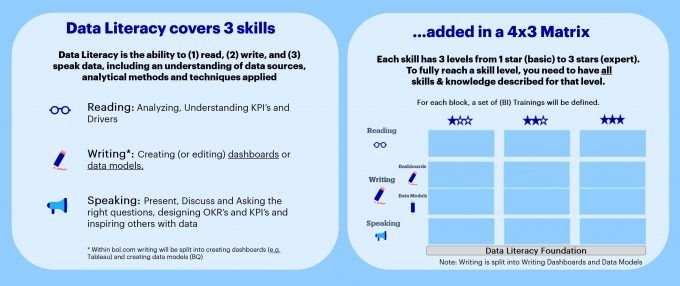Data Maturity Model as common ground, Data Literacy Model to measure the level of speaking, writing and reading data
To state as a company we want to become more data-driven is the first step. To truly understand what this means and define a common ground to discuss the progress is the second.
Back in the eighties, the Capability Maturity Model was defined to develop and refine software development processes. Later on, many more Maturity Models were introduced like the Business Maturity Model, the Lean Maturity Model and Agile Maturity Model.
What the episode covers
To develop and refine the data-driven organization, we created the Data Maturity Model. This model enables us to measure where we stand in our goals towards 2023:
- Our data consumers are self-sufficient: They know what they need, what they look at, how to analyze this and how to use insights/focus on in their daily jobs.
- We want to do this in a scalable way and empower the users.
- To know what the current level of maturity is in the organization we apply different models and this helps us to fill in the white spots (e.g. in training).
- And we can apply the same for partners (future).
Bol.com Data Maturity Model

Data Literacy Model
One specific element of the Data Maturity Model is about skills. On what level are you able to read, write and speak data. This is captured in the Data Literacy Model. We discuss the bol.com interpretation of the Data Literacy Model.
Bol.com Data Literacy Model

Guests
- Willem Bekkers – BI specialist and Data Coach – involved in eg our measurability month.
- Meike Teunissen – BI specialist who is in the Autonomous Insights team and the expert within bol.com in Tableau.
Show notes
- This podcast episode can be seen in a combination of podcast episodes covering the data-driven organization:
- OKR Guide